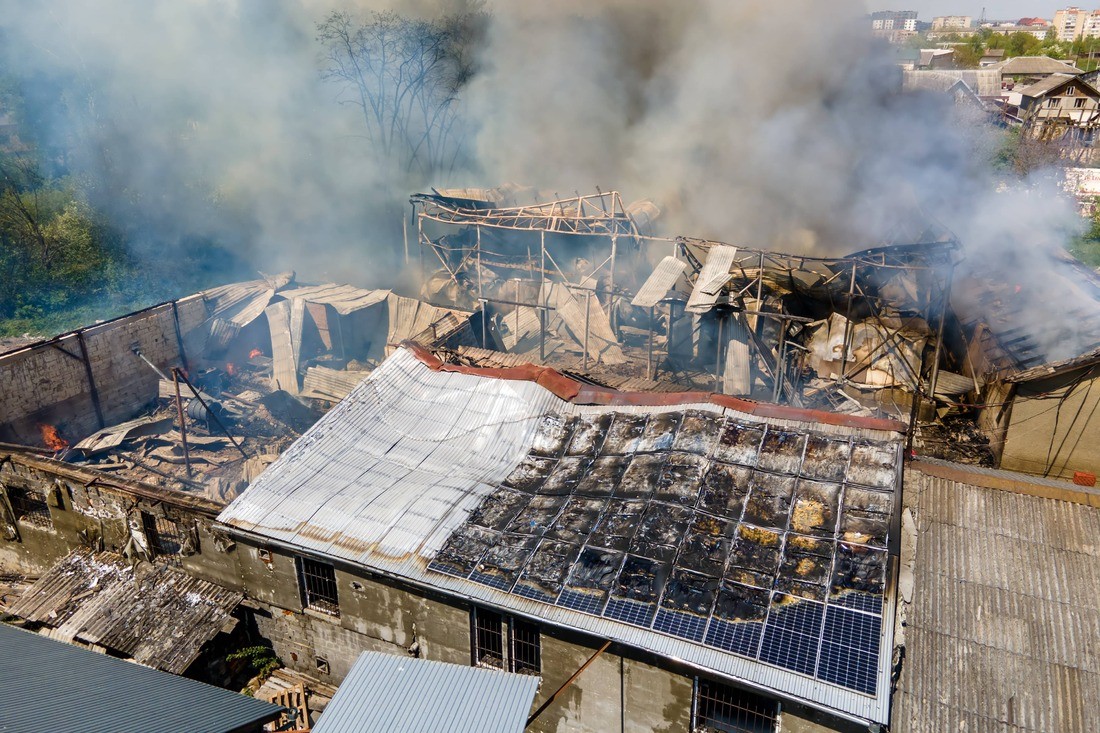
The Role of Fire Damage Restoration in Water Mitigation
Fire damage restoration is an essential process that helps to restore properties affected by fire incidents. In addition to addressing the damages caused by the fire itself, fire damage restoration also plays a crucial role in water mitigation. This article will explore the role of fire damage restoration in water mitigation, including the process, benefits, and importance.
The Process of Fire Damage Restoration and Water Mitigation

When a fire occurs, the fire department uses water or fire retardant chemicals to extinguish the flames. While this helps stop the fire from spreading, it can result in significant water damage to the property. Fire damage restoration professionals are trained to handle both fire and water damage, and the process typically involves the following steps:
- Assessment: The restoration team assesses the extent of the fire and water damage to determine the appropriate restoration plan.
- Water Extraction: The first step in mitigating water damage is to remove excess water from the property. Specialized equipment, such as pumps and dehumidifiers, is used to extract the water effectively.
- Drying and Dehumidification: After the water is extracted, the property is thoroughly dried to prevent further damage and the growth of mold and mildew.
- Smoke and Soot Cleanup: Fire damage often leaves behind smoke and soot residues, which can cause further damage if not properly cleaned. The restoration team uses specialized techniques and equipment to remove smoke and soot from surfaces, including walls, ceilings, and furniture.
- Structural Repairs: Depending on the severity of the fire, structural repairs may be necessary. The restoration team assesses the structural integrity of the property and performs any necessary repairs or reconstruction.
- Odor Removal: Fire incidents often result in lingering smoke odors. Fire damage restoration professionals use various methods, such as ozone treatment or thermal fogging, to eliminate these odors and improve air quality.
- Final Cleaning: Once the restoration process is complete, a thorough cleaning of the entire property is performed to ensure it is safe and habitable.
The Benefits of Fire Damage Restoration in Water Mitigation
The role of fire damage restoration in water mitigation goes beyond simply repairing the damages. Here are some of the key benefits:
- Mold Prevention: Water damage creates an ideal environment for mold and mildew growth. By promptly addressing water damage through fire damage restoration, the risk of mold infestation is significantly reduced.
- Structural Integrity: Water can weaken the structural integrity of a property if left unattended. Through the restoration process, damaged structural components are repaired or replaced, ensuring the property remains strong and safe.
- Time Efficiency: Fire damage restoration professionals are equipped with the necessary tools, expertise, and experience to promptly mitigate both fire and water damage. This helps minimize downtime and allows occupants to return to their normal lives sooner.
- Insurance Claims: Proper documentation of the restoration process can assist property owners in filing insurance claims for fire and water damage. Fire damage restoration professionals can provide the necessary evidence and support throughout the claims process.
.jpg)
The Importance of Fire Damage Restoration in Water Mitigation
Ignoring water damage caused by firefighting efforts can lead to long-term consequences. Water seepage can result in structural issues, electrical problems, mold growth, and even compromise the health and safety of occupants. By addressing water damage through fire damage restoration, these risks are mitigated, and the property can be restored to its pre-loss condition.
Additionally, proper fire damage restoration ensures the removal of harmful substances, such as smoke particles and soot, which can cause respiratory issues and other health problems if left untreated.
In conclusion, fire damage restoration plays a vital role in mitigating water damage caused by firefighting efforts. The process helps prevent further damage, ensures the safety of occupants, and restores the property to its pre-loss condition. If you require professional fire damage restoration services, contact JGW Group Water Damage Restoration Deerfield Beach at 754-294-5716.
What is the process of fire damage restoration?
What are the benefits of fire damage restoration in water mitigation?
Important Facts and Statistics about Fire Damage and Property Restoration
- 2019 saw a 43% decrease in structure fire deaths in one- or two-family homes and a 63% decrease in fire deaths in apartments compared to 1980. (source: Fire Damage Statistics – 2019-2020 Fire Damage and Restoration Data)
- In 2023, there were 38 home fire fatalities. (source: Fire Damage Statistics – 2019-2020 Fire Damage and Restoration Data)
- The risk of death or injury from fire is not the same for everyone. (source: Effects of Fire | Home Fire Statistics | The Hartford)
- Carbon monoxide is the chemical result of incompletely burned fuel sources such as gasoline. (source: Effects of Fire | Home Fire Statistics | The Hartford)
- In 2018, public fire departments responded to an estimated 1,318,500 fires in the United States. (source: Fire Facts | Fire Safety Facts & Statistics | Fire Life Safety)
- The typical price range to restore water damage across the United States is between $1,240 and $5,342. (source: Water Damage Statistics (2023) – RubyHome.com)
- The death rate in homes with no smoke alarms or working smoke alarms was reported to be almost twice as high. (source: The Facts About Fire Damage to Residential Properties – Rentec Direct Blog)



